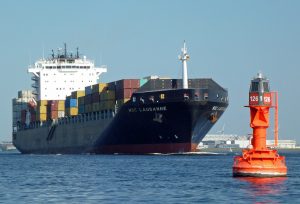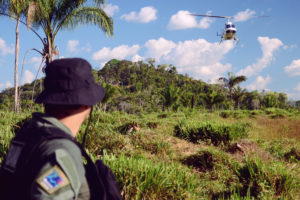Wildlife-based tourism is growing rapidly worldwide as the number of tourists continues to grow and as we, as travellers, seek out new and more enriching personal experiences with local cultures and wildlife. This is what inspired me to take six months unpaid leave from the grind of legal practice many years ago and backpack around South America with my little sister. Experiencing the natural beauty of places like the Amazon rainforest, Iguazú Falls and Machu Picchu and the local people fighting to protect them was life-changing.
The UN World Tourism Organisation estimates that 7% of world tourism relates to wildlife tourism, growing annually at about 3%, and much higher in some places, like our Unesco world heritage sites. A WWF report shows that 93% of all natural heritage sites support recreation and tourism and 91% of them provide jobs. In Belize, more than 50% of the population are said to be supported by income generated through reef-related tourism and fisheries.
I’ve just come back from the Northern Rangelands Trust in Kenya, where I saw amazing work with local communities to protect wildlife. The trust’s mix of funding includes almost 30% of revenue coming from tourism. It employs over 1,000 Kenyans. I spoke with local people who told me that the rhino and the elephant bring them security, healthcare and education, and no one must interfere with these animals. They are today the best protectors of the wildlife, working with local rangers. Their development is being achieved through conservation.
The result: in this region elephant poaching is down by 50%. No rhinos have been poached for four years. Tourism revenue is growing. And it is not the only example: wonderful examples of success exist in many other places, including in the Chitwan National Park in Nepal, where again local people are front and centre.
But the very assets that underpin this wildlife-based tourism – the wildlife itself – are under severe threat. The threats come from a multitude of sources: habitat loss, pollution, infrastructure, climate change, over-exploitation and illegal trade, the most immediate threat to wildlife. If we lose the wildlife, we lose the wildlife-based tourism and the jobs that goes with it.
The surge in illegal wildlife trade witnessed in recent years is industrial in scale and is driven by transnational organised criminals. They target high-value wildlife without regard for the animals or people’s lives. They corrupt local officials, recruit and arm local poachers, plunder local wildlife, create insecurity and put local communities into a poverty spiral.
The international community is fighting back. There is a global collective effort underway to take on these criminals. But they are hard to beat. We cannot rely on law enforcement alone. We need the private sector, especially the transport, travel and tourism sectors, to join the fight. Many in the transport sector, especially airlines, have come on board largely thanks to HRH the Duke of Cambridge, through his Transport Task Force initiative. It is an inspired initiative that has seen the likes of the president of Emirates Airlines standing up for wildlife and even painting four of his planes with tigers and elephants. The tourism sector must join us as well, as must each one of us, as tourists.
It is true that, if poorly managed, tourism can have negative impacts on wildlife and the environment, as we have seen in the Galapagos, where there sheer volume of tourists poses a serious threat to the islands’ unique wildlife. But on a crowded planet of over 7 billion people, growing to over 9 billion, we need viable land use options that support wildlife, and wildlife-based tourism is a critical part of the mix in ensuring the survival of wildlife and in fighting wildlife crime.

‘Amazing work’: John Scanlon (centre) visits the Northern Rangelands Trust in Kenya. Photograph: Ami Vitale
Well-managed wildlife-based tourism can offer an economic opportunity that supports wildlife. It must be responsibly managed and operators must engage with staff, customers and, most importantly, local people. Staff can be eyes and ears for the police, and customers can stop buying illegally or unsustainably sourced wildlife products. Engaging local people is the key, and that takes effort.
Evidence shows that when local people have a stake in it they will be the best protectors of wildlife, as is evident in the Northern Rangelands Trust.
Many wildlife destinations are remote from capitals, where there may be limited employment opportunities. This may open up opportunities for tourist operators. They can invest in local communities in a way that will benefit them, benefit wildlife and benefit their business.
Tourism operators have the power to lift local people out of poverty in a manner that will be mutually beneficial and self-sustaining. Or they can choose not to engage with local communities and to invest in a manner that sees all of the profits go offshore – in which case I would say they are no better than the poachers and the smugglers.
The reality is that the tourism sector is not a fringe player in the fight against illegal wildlife trade – it is right at the centre of it. Tourism operators are on the front line of this fight along with the customs and rangers and inspectors.
How operators engage with their staff, customers and local communities, and where they choose to invest, can change the trajectory of the survival of our wildlife. By doing the right thing tourism operators will not just be protecting wildlife. They will be investing in maintaining the core natural asset that underpins their own wildlife tourism venture.
But operators can’t do it alone. How we behave as individual tourists is ultimately what counts, and that is our choice. We have a personal responsibility to hold operators’ feet to the fire. We cannot support the bad ones, no matter how good the price. And let us never forget: wildlife and the local people living among it are to be not just enjoyed but respected by all of us.
This is part of China Dialogue’s series on elephant conservation. The original version of this article appeared on the Guardian website and can be accessed here.







